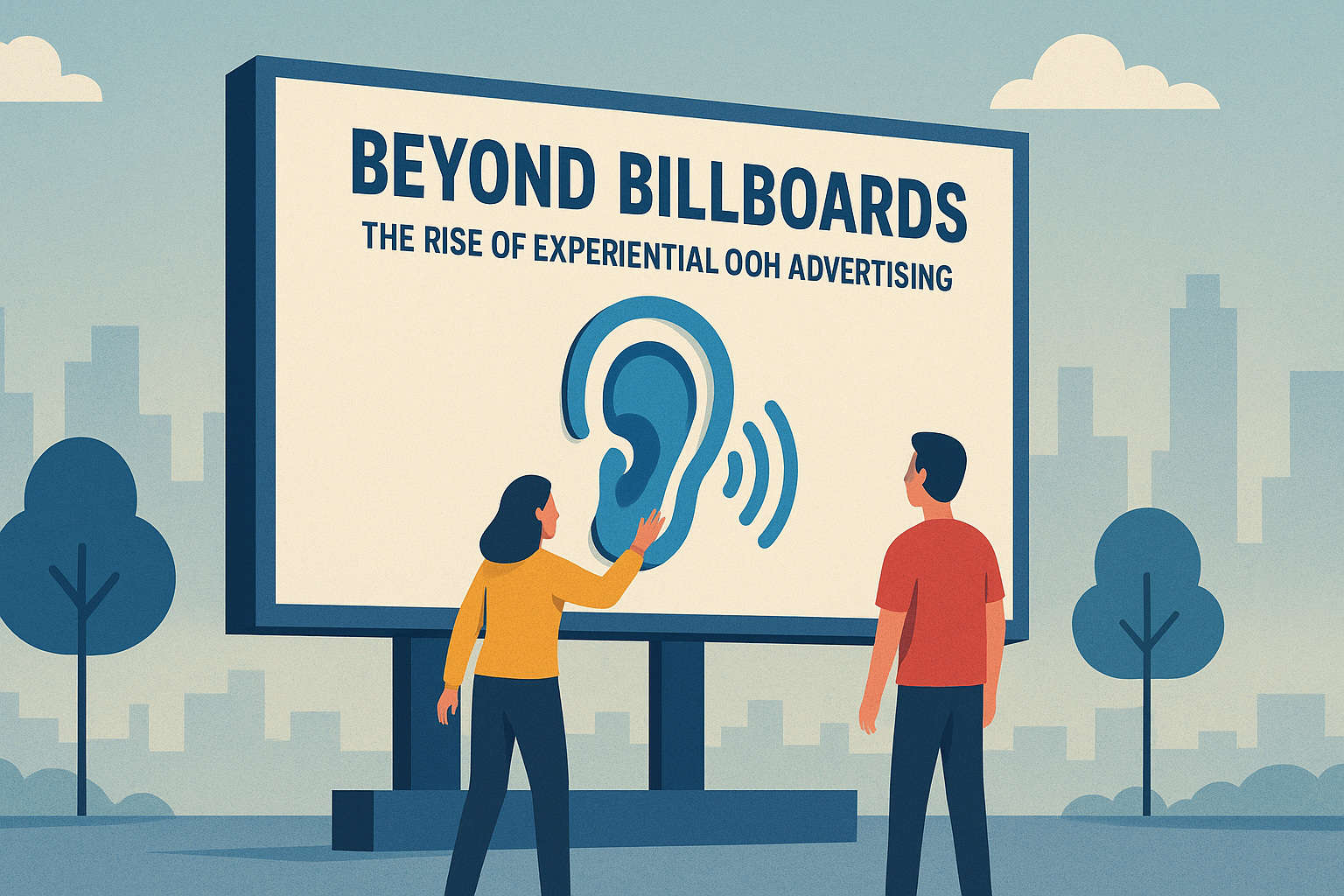
Introduction
Outdoor advertising is no longer confined to static billboards or looping digital screens. Today, brands are reimagining the very streets, walls, and public spaces around us—turning them into immersive, interactive experiences. This is the world of Experiential OOH (Out-of-Home) advertising.
At Adnoxy, we believe the future of OOH isn’t about shouting louder, but inviting audiences to step in, interact, and become part of the story.
What Is Experiential OOH?
Experiential OOH goes beyond visibility—it’s about participation. Instead of passively viewing an ad, consumers actively engage with it through interactive technology, live activations, or sensory-driven environments.
Examples include:
- A pop-up installation where people can test a new product in real-time.
- An AR-powered billboard that comes alive through a smartphone camera.
- A 3D projection that transforms a city building into a living canvas.
The goal is simple: create memorable, shareable moments that extend far beyond the physical site.
Why Brands Are Shifting Toward Experiential OOH
- Deeper Emotional Connection: People remember experiences longer than they remember messages.
- High Shareability: Immersive activations naturally generate social media buzz.
- Storytelling Power: Brands can showcase values, innovation, and creativity in ways a static ad cannot.
- Multi-Sensory Impact: Sight, sound, touch, and even smell can be leveraged to create unforgettable impressions.
- Data Feedback Loops: Many experiential campaigns now integrate tracking tech to measure dwell time, engagement, and conversions.
Real-World Examples
- Nike’s AR Sneakers Drop: A digital billboard in Tokyo let passersby “try on” sneakers virtually via AR and order instantly.
- Netflix Stranger Things 3D Projection: Buildings across major cities transformed into portals to the “Upside Down,” creating a viral sensation.
- Coca-Cola Happiness Machine: A vending machine in public places dispensed free Coke and gifts, sparking organic media coverage worldwide.
- IKEA’s Pop-up Living Rooms: Outdoor spaces in metro stations were turned into fully furnished living areas to showcase IKEA products.
💡 Insight: According to industry studies, experiential activations can drive brand recall 2.5x higher than traditional OOH.
Challenges of Experiential OOH
While powerful, experiential campaigns demand more planning than traditional OOH:
- Logistical Complexity: Permits, location design, and on-ground execution are intensive.
- Higher Costs: Custom builds and tech integrations require larger budgets.
- Measurement Difficulty: While engagement can be tracked, direct ROI attribution isn’t always straightforward.
- Scalability: Experiences are often location-specific, making replication across multiple markets challenging.
How Brands Can Start with Experiential OOH
- Align with Brand Values: Ensure the experience reflects your brand’s identity and purpose.
- Start in High-Footfall Areas: Metro hubs, malls, and city centers maximize exposure.
- Blend Physical with Digital: Use QR codes, AR, or mobile extensions to bridge the offline and online journey.
- Measure Smartly: Track dwell time, social mentions, and sentiment analysis to evaluate success.
- Partner with Experts: Work with platforms like Adnoxy that understand OOH ecosystems and can integrate experiential into broader campaigns.
Conclusion
Experiential OOH isn’t just about grabbing attention—it’s about earning lasting impressions. It transforms advertising from a transaction into a conversation and a memory.
As audiences grow more resistant to traditional ads, experiential activations are proving to be the game-changer in modern marketing.
At Adnoxy, we’re helping brands go beyond billboards and turn everyday spaces into unforgettable experiences. Because the future of OOH isn’t just seen—it’s lived.



